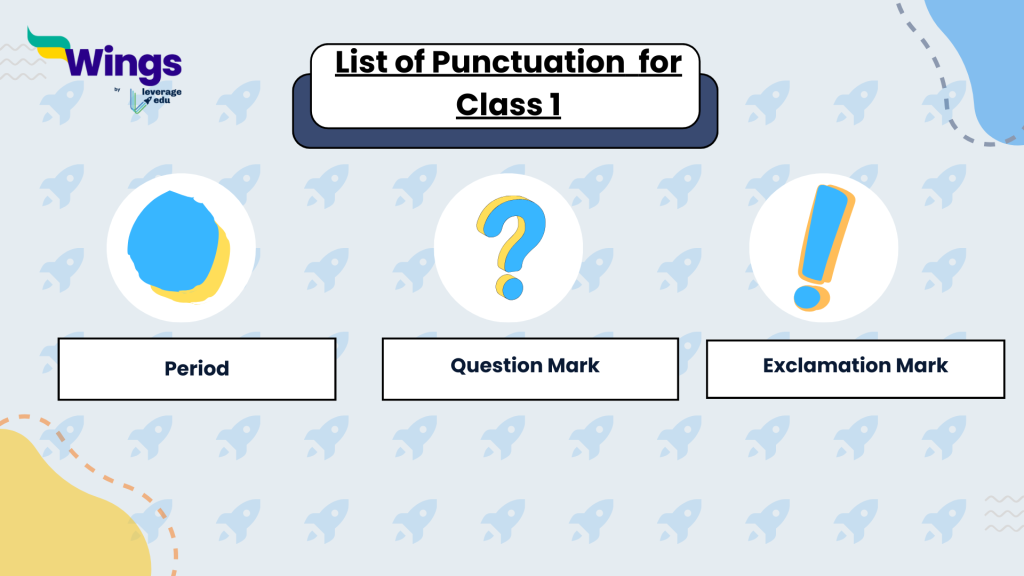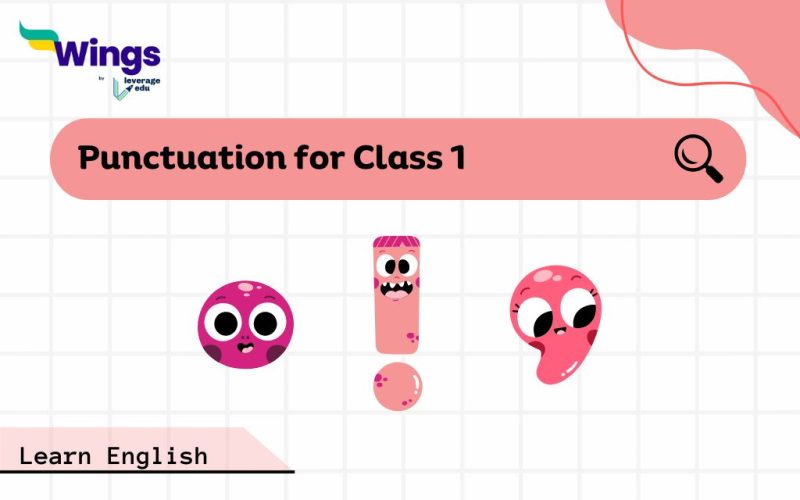Punctuation for Class 1: Whenever we talk about punctuation, the first thing that comes into our mind is some special characters that are used in the construction of sentences. Without these characters, the sentences would look empty and vague. Speaking of characters, several types of punctuation marks are used in English grammar. If you are a Grammar nazi you must be very vigilant of these punctuation marks as they form the basis of English sentences. So, to make things easier, we have compiled a blog on punctuation for class 1 which will help you learn all the basics.
What is Punctuation for Class 1?
Class 1 students typically begin to learn about basic punctuation marks such as periods (.), question marks (?), and exclamation marks (!). They are introduced to these symbols and taught their functions in sentences. For example:
- Period (.) is used to end a statement.
- Question mark (?) is used at the end of a sentence to indicate a question.
- Exclamation mark (!) is used to show excitement or emphasis.
Students at this level are usually taught through simple exercises, such as filling in the correct punctuation mark in sentences or identifying the punctuation mark needed in a given sentence.
Types of Punctuation for Class 1 with Usage and Examples

The punctuation for first-graders to memorise is provided below, along with examples of each type of punctuation and their meanings for easy comprehension. This is because there are various types of punctuation used in the English language.
| Punctuation Mark | Usage | Examples |
| Period (.) | This punctuation mark is used to indicate the conclusion of a statement and is used as a punctuation mark at the end of each sentence. | The price of the item is $19.99She went to the store. Dr. Smith will see you now. |
| Question Mark (?) | A question mark is used to ask questions in writing and to communicate questions. | What is your name? Isn’t it a beautiful day? Where was he going? |
| Exclamation Mark (!) | An exclamation mark is a punctuation mark used in English grammar to convey strong emotions, emphasis, surprise, or exclamatory statements. | I can’t believe we’re going to Disneyland! Oh my goodness! Look who’s here! The baby is finally here! |
How To Teach Grade 1 Students Grammar Punctuation?
Teaching punctuation to first-graders can be challenging yet essential for their English language skills, especially for competitions like the English Olympiad Grade 1. Correct punctuation ensures sentences convey the right meaning. As a parent, focusing on teaching punctuation is crucial.
Here are effective ways to teach English punctuation to young children:
- Interactive Activities: Engage students with fun games and group activities to make learning enjoyable. For example, assign punctuation marks to different actions or have them act out sentences with the correct punctuation.
- Reading Aloud: Have students read short stories aloud with appropriate intonation. This practice helps them understand where and why punctuation marks are used.
- Error Spotting Games: Create stories with intentional punctuation mistakes and have students identify and correct them. This interactive approach makes learning punctuation engaging and memorable.
These methods not only aid in learning but also make the process enjoyable for young learners
Worksheet on Punctuation for Class 1
It’s time to test your knowledge. To make things easier for you we have compiled a worksheet on punctuation for class 1. In the exercise given below, write the correct sentence with the required punctuation marks.
Instruction: Rewrite the following sentences using the correct punctuation.
Related Reads on Punctuation
FAQs
To begin teaching punctuation for Class 1, begin by reading them short stories along with the required tonal expressions. This tone will help them identify and understand why, how, and where the punctuation marks should be placed.
Begin by teaching them the basics such as commas, full stops, question marks and how they can be incorporated into sentences.
Punctuation can be defined as a set of symbols used to separate and clarify the meaning of sentences and written elements.
We hope this blog has provided you with all the necessary information on punctuation for class 1. To advance your grammar knowledge and read more informative blogs, check out our Learn English page and don’t forget to follow Leverage Edu.
 One app for all your study abroad needs
One app for all your study abroad needs















 60,000+ students trusted us with their dreams. Take the first step today!
60,000+ students trusted us with their dreams. Take the first step today!

